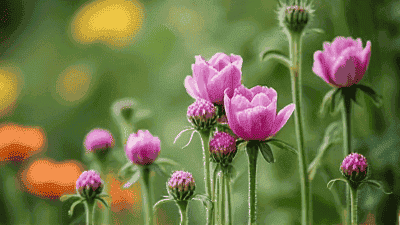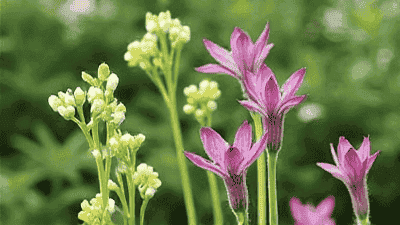
Creating a herb garden is a fulfilling and practical endeavor that can enhance your culinary skills and bring color and fragrance to your outdoor space. Whether you have a spacious backyard or just a small balcony, a fragment herb garden allows you to grow your favorite herbs in a compact area.
Herb gardens are designed specifically for growing herbs, which are plants used for culinary purposes, medicinal properties, or for enhancing the aesthetics of a garden. Herbs are typically characterized by their aromatic leaves, which contain essential oils and flavors that enhance various dishes.
Culinary Use: Fresh herbs can elevate the flavor of dishes, and having them readily available in your garden allows for easy access to fresh ingredients.
Medicinal Properties: Many herbs provide health benefits and can be used in teas and natural remedies. For example, chamomile is known for its calming effects, while peppermint can help with digestion.
Aroma and Aesthetics: Herbs add a delightful fragrance to gardens and can attract pollinators like bees and butterflies, enhancing the overall beauty of your outdoor space.
Environmental Benefits: Growing your own herbs can reduce your carbon footprint as you minimize the need for store-bought produce that often comes packaged in plastic.
Cost-Effectiveness: By growing your own herbs, you can save money on buying fresh herbs from the grocery store, especially for specialty varieties.

Before you start planting, it is crucial to identify a suitable location for your fragment herb garden. Consider the following factors:
Most herbs thrive in full sunlight, needing at least six to eight hours of direct sunlight per day. Observe potential planting areas in your garden or balcony to determine where the sun’s rays hit the most.
Choose a location that is easily accessible for watering, harvesting, and maintenance. Ideally, your herb garden should be close to your kitchen to simplify the process of snipping fresh herbs for cooking.
Good drainage is essential for healthy root development. Avoid areas where water tends to pool after heavy rains. If your soil retains too much moisture, consider raised beds or containers.
Creating a well-planned design for your herb garden can help maximize space and improve aesthetics. Here are some design ideas:
If you have a backyard, consider building raised beds for your herb garden. Raised beds provide better drainage and can be easier to maintain. You can use wood, bricks, or stone to create the frame.
When space is limited, vertical gardening is an excellent option. You can use wall-mounted planters, hanging pots, or trellises to grow herbs upward. This allows you to use vertical space creatively while adding visual interest.
Containers are a fantastic way to start a herb garden on a balcony or patio. Choose pots made from materials like terracotta, ceramic, or plastic. Ensure that they have drainage holes to prevent waterlogging.
An herb spiral is a unique and productive design that optimizes space while providing varying microclimates for different herbs. This circular garden features a spiral shape that creates different levels, allowing you to plant a variety of herbs while conserving space.

Choosing the right herbs for your fragment garden depends on your cooking preferences, climate, and available space. Here are some popular herbs to consider:
Basil: A staple in Italian cuisine, basil thrives in warm conditions and enjoys full sunlight.
Parsley: This versatile herb can be used in salads, soups, and sauces. It grows well in partial shade.
Cilantro: Also known as coriander, cilantro has a distinct flavor and is essential in many cuisines. It prefers cooler temperatures.
Thyme: A hardy herb that requires little maintenance, thyme is a perfect choice for beginner gardeners.
Chives: With their mild onion flavor, chives are great for garnishing. They tolerate various conditions and are perennial herbs.
Peppermint: Known for its soothing properties, peppermint is easy to grow and can spread quickly. Consider planting it in a container to prevent overgrowth.
Chamomile: Often used in teas, chamomile has calming effects. It prefers full sun and well-drained soil.
Echinacea: Also known as coneflower, echinacea is known to boost the immune system. It can tolerate drought and requires full sun.
Lemon Balm: This fragrant herb has a lemony scent and is used in teas. It loves sunlight and requires regular watering.
Rosemary: A sturdy herb with woody stems, rosemary has a strong aroma and pairs well with roasted dishes. It prefers hot and dry conditions.
Sage: Known for its earthy flavor, sage is a slow-growing herb that prefers sunny spots.
Lavender: This fragrant herb adds beauty to your herb garden and attracts beneficial insects. It thrives in full sun and well-draining soil.
The success of your herb garden depends largely on the quality of the soil. Herbs generally prefer well-drained, nutrient-rich soil. Here are some tips for preparing the soil:
Before planting, test your soil's pH and nutrient levels. Herbs typically thrive in a soil pH of 6.0 to 7.0. You can purchase soil testing kits at gardening supply stores or send samples to a local extension service.
To improve soil quality, you may need to amend it with organic matter such as compost, aged manure, or peat moss. These amendments enhance soil structure and provide essential nutrients to your herbs.
Use a garden fork or tiller to mix the amendments into the soil. This process aerates the soil, allowing roots to penetrate easily.
After tilling, level the soil with a rake to create an even planting surface. This practice reduces the risk of water pooling in any low spots.

Once your soil is prepared and you have selected your herbs, it's time to plant. Follow these steps for a successful planting process:
The best time to plant herbs depends on your climate and the specific herbs you have chosen. In general, most herbs can be planted in the spring after the threat of frost has passed.
Refer to the individual growing instructions for each herb to determine the appropriate planting depth. Generally, seeds should be sown at a depth of two to three times their size, while seedlings should be transplanted to the same level they were previously growing in.
Ensure you provide enough spacing between plants to allow for healthy growth. Crowded herbs may compete for nutrients and sunlight, leading to poor performance.
After planting, water your herbs thoroughly. This initial watering helps settle the soil and ensures that roots make good contact with the soil.
Proper care and maintenance are key to a flourishing herb garden. Here are important aspects of herb care to consider:
The watering needs of herbs can vary based on their type and environmental conditions. As a general rule, allow the soil to dry slightly between waterings to prevent overwatering, which can lead to root rot.
While herbs generally do not require excessive fertilization, you can provide them with a balanced organic fertilizer during the growing season. Liquid fertilizers can be applied once a month, while granular fertilizers can be applied when planting.
Regular pruning encourages healthy growth and stimulates new branching. For culinary herbs, aim to harvest leaves frequently. Removing flowers also helps redirect energy into leaf production.
Monitor your herbs for signs of pests such as aphids, spider mites, or whiteflies. Use organic methods like neem oil spray or insecticidal soap to manage infestations effectively.
As seasons change, adapt your care routine accordingly. In colder months, consider bringing container herbs indoors or using row covers to protect them from frost.
Even seasoned gardeners may encounter challenges when growing herbs. Here are some common issues and solutions:
Fungal diseases such as powdery mildew can affect herbs, especially in humid conditions. To prevent this, ensure that plants have adequate air circulation and avoid overhead watering.
Overwatering is a common mistake among gardeners. Always check the soil's moisture level before watering, and allow it to dry adequately between waterings.
Signs of nutrient deficiencies can include stunted growth or yellowing leaves. If you suspect your herbs are lacking nutrients, amend the soil with organic fertilizers and compost.
Regularly inspect your herbs for signs of pests, and take action at the first sign of an infestation. Effective and preventative measures can include using insect barriers or companion planting to deter pests.
Harvesting your herbs at the right time can improve flavor and encourage new growth. Here’s how and when to harvest:
Most herbs can be harvested beginning when they have reached a size suitable for use, typically around six to eight weeks after planting, but the timing may vary by type.
Use scissors or garden shears to snip off leaves or stems. For leafy herbs like parsley and basil, cut just above a leaf node to promote branching. For woody herbs like rosemary and thyme, trim only a few inches at a time.
Fresh herbs can be stored in various ways:
Creating a fragment herb garden is a rewarding experience that provides numerous benefits, from fresh culinary herbs to a beautiful and fragrant space. By choosing the right location, designing your garden layout, selecting suitable herbs, and providing appropriate care, you can cultivate a successful herb garden that enhances your home and daily life.
As you embark on your journey to grow herbs, remember that plants require patience and care. Embrace the learning process as you learn to nurture and harvest your fragrant plants, and enjoy the many flavors and aromas they bring to your kitchen.